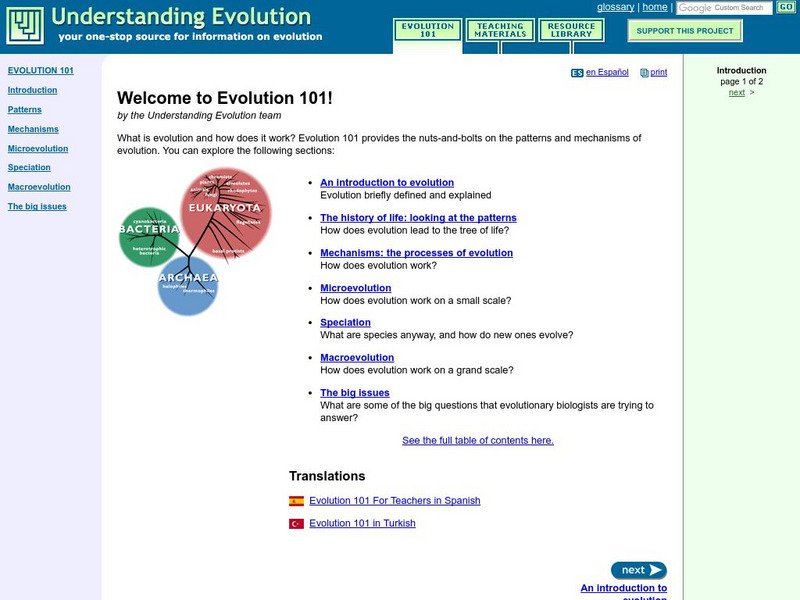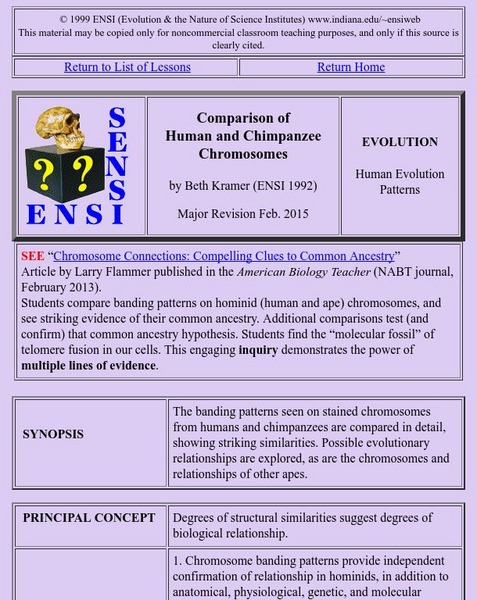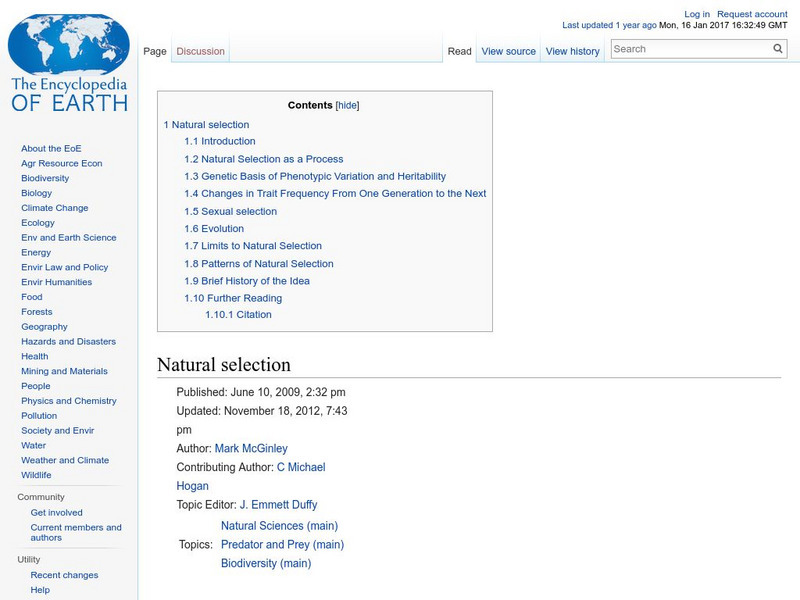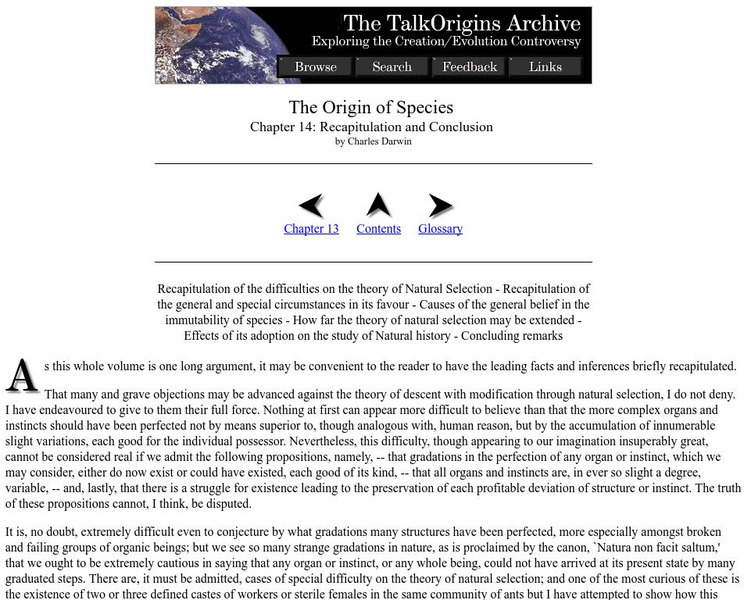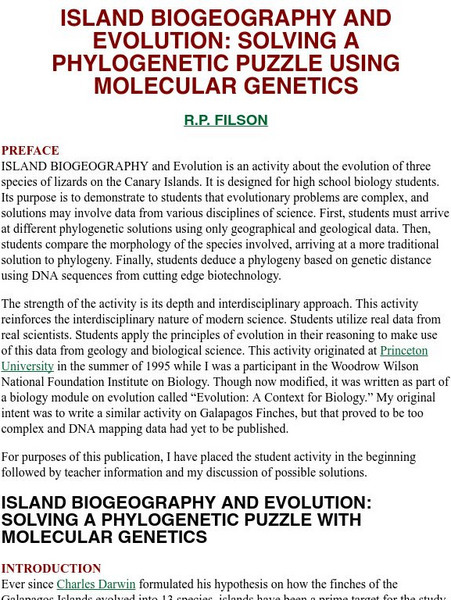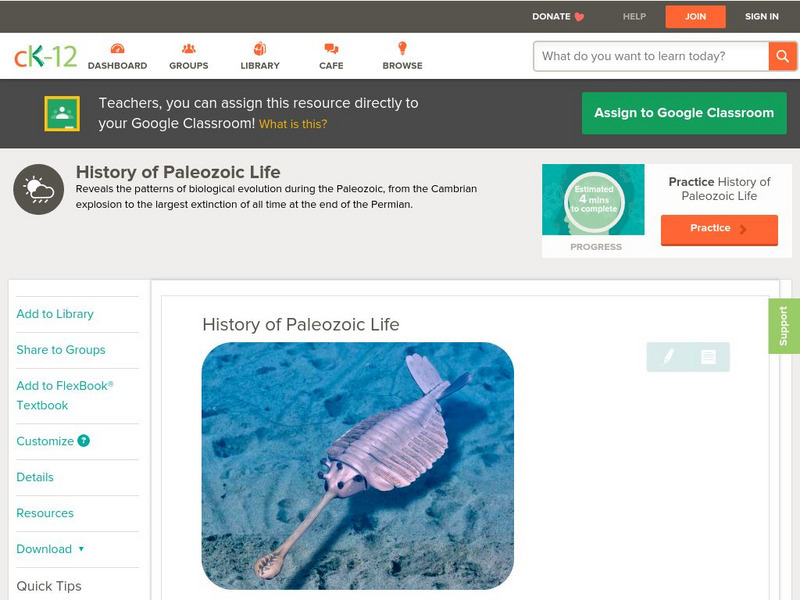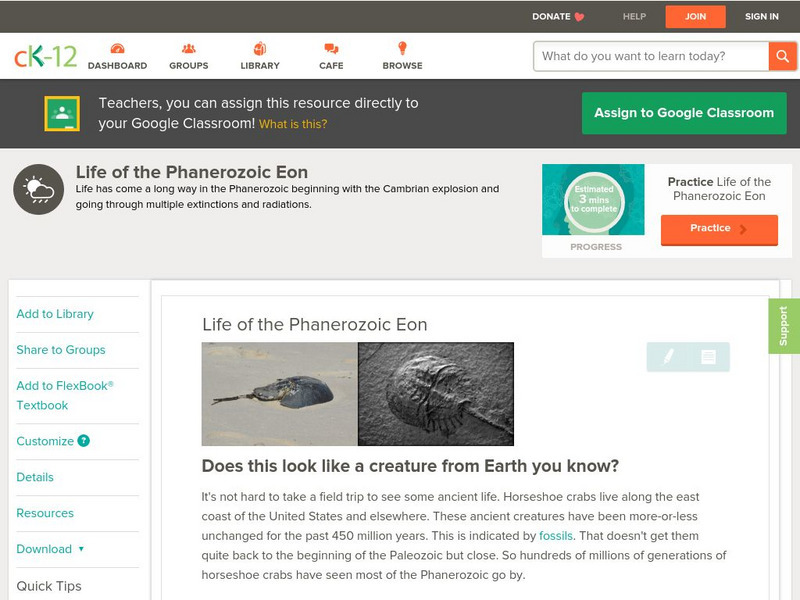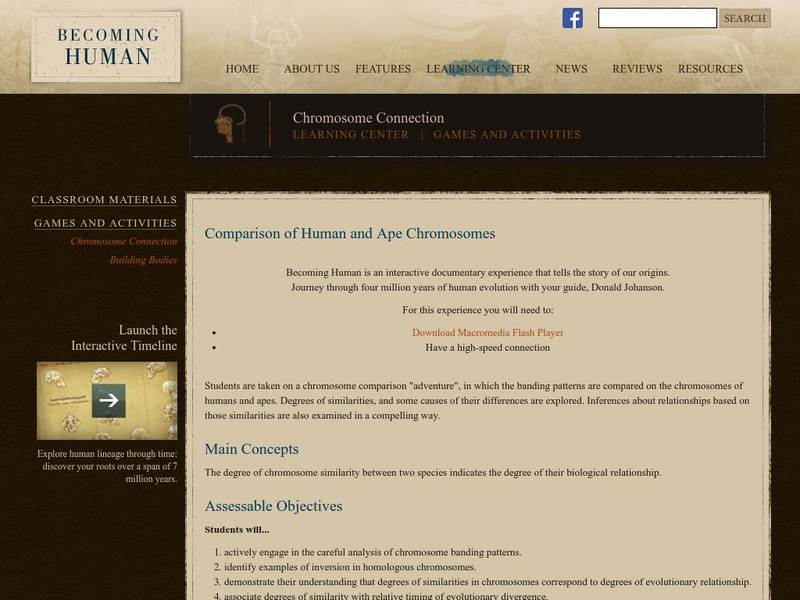Hi, what do you want to do?
Curated OER
Hominoid Cranium Comparison
Students describe, measure and compare cranial casts from contemporary apes (chimpanzees and gorillas, typically), modern humans and fossil "hominids" (erect and bipedal forms evolutionarily separated from apes).
Curated OER
Where Have All the Endangered Gone?
Students explore animals that are endangered. They choose an endangered animal that they would like to keep from becoming extinct. Students create a persuasive presentation to persuade someone to understand why they feel keeping their...
Curated OER
Spider Activities, Experiments and Projects
Students examine seven spiders and put them into two or three groups based on their structural similarities. In groups, they create a cladogram proposing possible ancestral relationships. Students design an experiment related to their...
Curated OER
Whale Adaptations
Learners explore whales and how they have adapted to survive in the ocean. In this whale adaptations lesson students complete several activities that allow them to investigate animal adaptations.
Curated OER
Using Color as Defense
Middle schoolers explore mimicry and crypsis, participate in hands-on predator-prey activity, and practice calculating averages and graph results in histogram.
Curated OER
Charlotte and Her Relatives Visit the Classroom: Spider Activities, Experiments and Projects
Students compare and contrast different spider species that they capture and maintain in the classroom for several days. They identify and research the species characteristics and living requirements then conduct an experiment on spider...
Curated OER
Nuts & Bolts: is Classification, Arbitrary, Or Not?
Learners, in groups, classify furniture, share their categories and rationales, then note how their different schemes vary, perfectly logical and useful, but completely arbitrary.
Curated OER
Polymer Clay Millefiori Cane Beads
Students explore how to make millefiori cane beads. They use clay and beads to form the unique art.
Curated OER
Couch Potatoes Around the World#138
Students identify potato chips as a consumer product and investigate what processes are needed to make the chips. They investigate where the potatoes are grown and harvested before being made into chips at a processing plant. They make a...
Curated OER
Weather Patterns
High schoolers use yearly averages over a five-year period to understand weather trends for a specific area.
Curated OER
Poetry Tea Party
Studetns make inferences based upone one-line poetry and group comparison. In this poetry lesson plan, 9th graders read strips from a poem and write prediction sentences for the poem. Students read each other's poetry lines and then read...
University of California
University of California Museum of Paleontology: Welcome to Evolution 101
What is evolution? This thorough site provides the basics of evolution focusing on the history of life, processes of evolution, microevolution, macroevolution, and more.
Indiana University
Ensi: Comparison of Human: Chimpanzee Chromosomes Lesson
This is a great lesson plan that combines Karoytypes and evolution. Students will recognize that the chromosomes of chimpanzees and humans are remarkably similar, then correlate that to their evolutionary relationship.
Encyclopedia of Earth
Encyclopedia of Earth: Natural Selection
Scientific article explaining what natural selection is, and how it manifests itself through genetics and from generation to generation. Natural selection is compared to genetic drift, both of which cause evolution to occur. The limits...
University of California
University of California Museum of Paleontology: Fossil Evidence
Understanding Evolution provides evidence for evolution using fossils. There are also links to lesson plans.
Talk Origins Archive
The Origin of Species, Chapter 14
The entire text of Charles Darwin's book, The Origin of Species is available on this site. This link is specifically for the chapter that discusses embryology as evidence for evolution.
University of California
Ucmp: Island Biogeography and Evolution
This is a lesson designed by a biology teacher. In it, students use maps and evidence of island age, molecular genetics, morphology, and distance apart to determine how the islands came to be occupied by different species of lizards. It...
CK-12 Foundation
Ck 12: Earth Science: History of Paleozoic Life
[Free Registration/Login may be required to access all resource tools.] Patterns of biological evolution during the Paleozoic Era.
CK-12 Foundation
Ck 12: Earth Science: History of Paleozoic Life
[Free Registration/Login may be required to access all resource tools.] Patterns of biological evolution during the Paleozoic Era.
CK-12 Foundation
Ck 12: Earth Science: Life of the Phanerozoic Eon
[Free Registration/Login may be required to access all resource tools.] Patterns of biological evolution during the Phanerozoic Era.
CK-12 Foundation
Ck 12: Life Science: Molecular Evidence for Evolution
[Free Registration/Login may be required to access all resource tools.] Chimpanzees and humans turn out to be very similar - if you look at their DNA. When scientists determined the entire genetic code of both humans and chimpanzees,...
New York University
Nyu: Darwin's Evidence for Evolution: Embryology
Concise description of embryology as evidence for evolution, as used by Darwin.
University of California
University of California Museum of Paleontology: Distribution in Time and Space
The Understanding Evolution site provides evidence for evolution in biogeography utilizing relative dating, geography, and plate tectonics.
Other
Becoming Human: Comparison of Human and Ape Chromosones
Have you ever wondered how closely we are related to other primates? Join this chromosone comparison adventure to compare the banding patterns of human chromosones to those of apes.
















